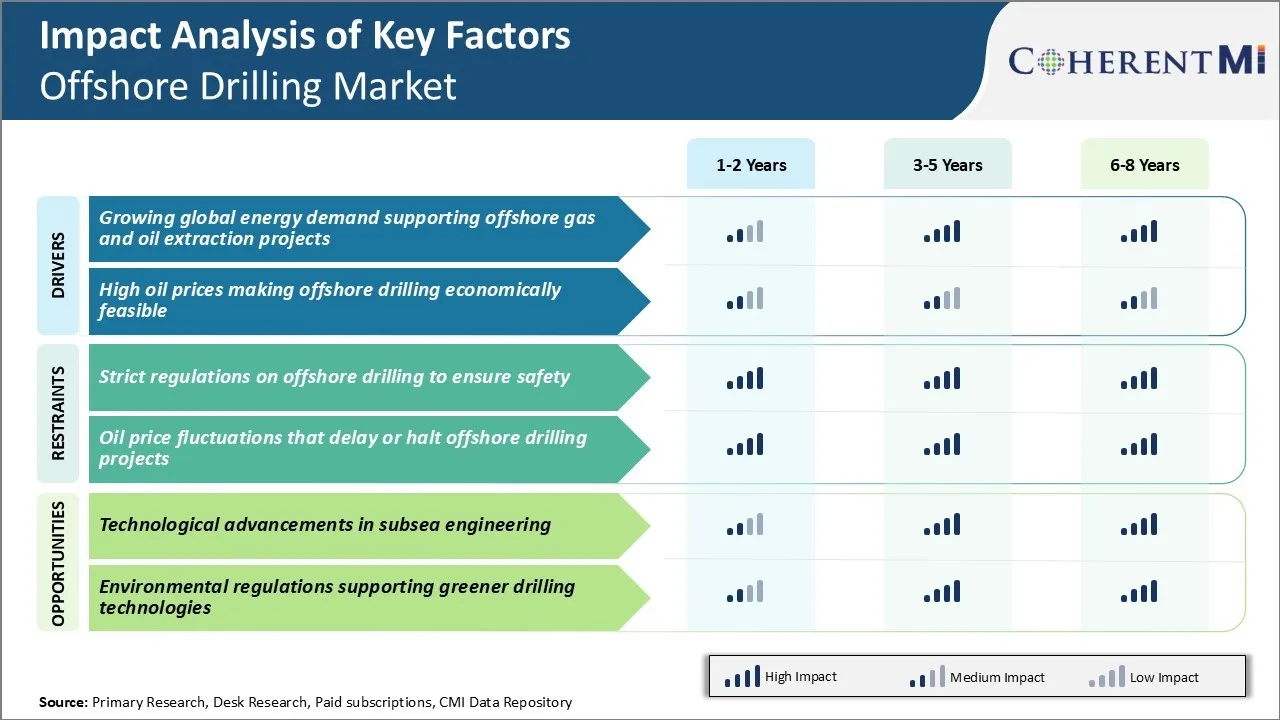Offshore Drilling Market Trends
Market Driver - Growing Global Energy Demand Supporting Offshore Gas and Oil Extraction Projects
As the world population continues to rise, so too does demand for energy resources. Though renewable sources are expanding rapidly, energy derived from oil and natural gas offshore reserves remains vital to sustain the world's growing appetite for power.
Many onshore oil and gas deposits have already been extensively tapped over past decades, with relatively easy-to-access reserves now dwindling. Advanced drilling and production technologies have enabled energy companies to exploit reserves previously considered uneconomical or too challenging technically.
The International Energy Agency estimates that offshore areas still hold around 30% of undiscovered technically recoverable oil and gas globally. This is spurring intensified interest in extracting offshore reserves that can help satiate their vast and growing appetite for petroleum.
Securing long-term energy supply is an urgent national priority for both established and developing nations. Harnessing the substantial known and projected offshore oil and gas reserves will be central to ensuring supply can match demand. This is expected to drive growth for the offshore drilling market.
Market Driver - High Oil Prices Making Offshore Drilling Economically Feasible
The offshore oil and gas industry requires massive upfront capital expenditures that push project breakeven costs high.
For operators to justify high expenditures, project economics must stack up. This means oil prices need to remain sufficiently high to cover capital outlays plus operating expenses while still delivering respectable rates of return. The past decade saw benchmark oil prices average over $80 per barrel, with prolonged periods well above $100 including a peak of $147 in 2008. Such high price levels made even the most expensive offshore endeavours commercially viable. Operators could recover mounting investment costs within reasonably prompt timeframes at those prices.
While prices have fallen from peaks and remain volatile, long-term trends point to oil generally holding above $60 in real terms according to numerous analysts and agencies. This is expected to have a substantial impact on the growth of the offshore drilling market in the coming years.

Market Challenge - Strict Regulations on Offshore Drilling to Ensure Safety
One of the major challenges facing the offshore drilling market is the implementation of increasingly strict regulations to ensure safety. In the aftermath of accidents like the Deepwater Horizon oil spill in 2010, governments and regulatory bodies have understood the need to prevent such disasters in the future.
As a result, compliance requirements have been strengthened significantly. Drillers now need to obtain various permits demonstrating rigorous safety protocols and emergency response plans. They also face closer scrutiny of their drilling equipment and operations. Complying with the complex and frequent changes in regulations involves heavy capital investments and raises operating costs. It influences the viability of projects, especially for smaller players.
Offshore drilling companies also struggle to hire personnel qualified to navigate the compliance landscape. The tight regulatory environment has made the offshore drilling market uncertain. It also makes the market tilted the balance towards larger corporations with deep pockets and resources to absorb additional compliance costs.
Market Opportunity - Technological Advancements in Subsea Engineering for Market Growth
One major opportunity for growth in the offshore drilling market centers around technological advancements in subsea engineering. As drilling activity moves to deeper waters with more challenging terrains, the need for sophisticated subsea technologies becomes paramount.
Advanced subsea production systems allow operators to maximize recovery from reservoirs located far below the ocean surface. New deepwater robotics, remotely operated vehicles, and automation solutions help overcome obstacles and improve efficiency of offshore operations. 3D printing applications are enhancing repair and maintenance solutions in remote offshore locations.
Ongoing development of hybrid- and fully-electric subsea production systems with renewable energy integration can significantly reduce carbon footprint of offshore fields. With increasing capital investments in research and development, the frontier of subsea technologies continues to expand. This allows offshore drillers to monetize reserves previously considered uneconomical, thereby driving future opportunities in offshore drilling market.